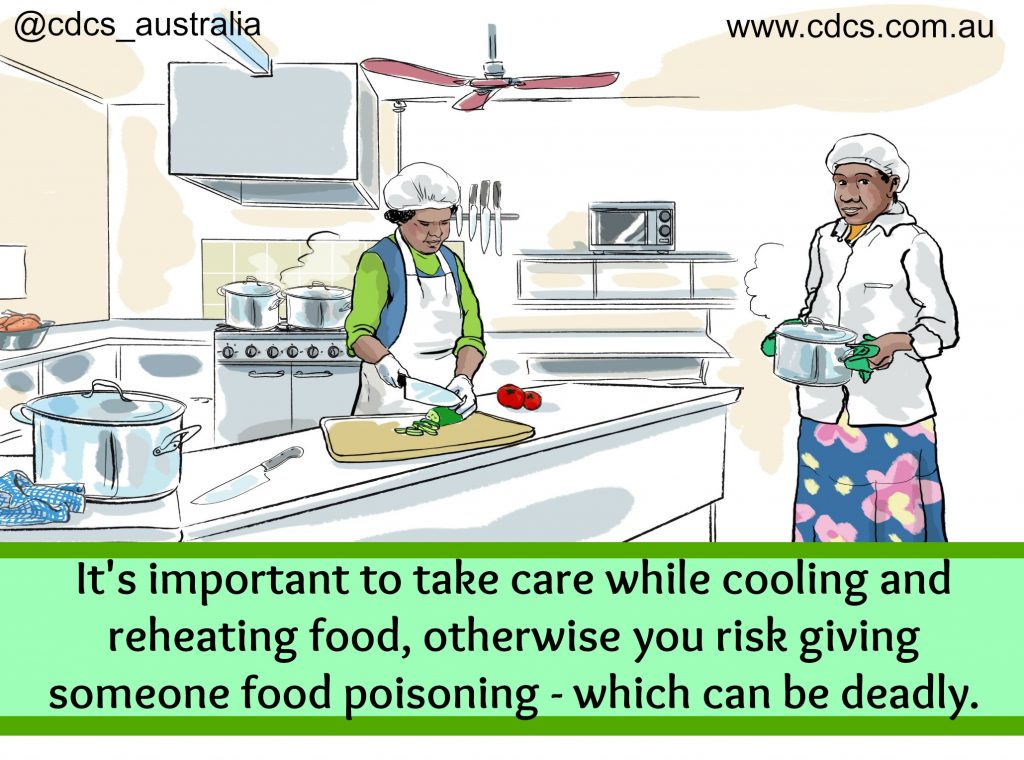Ensuring you and your kitchen staff follow the correct food safety guidelines is an important part in keeping elderly and vulnerable clients healthy.
As a person ages they become more susceptible to the negative impact of food poisoning, which can be deadly for the frail aged; their immune systems are no longer strong enough to fight off the illness.
As providers of client meals, it is the aged care centre’s responsibility to ensure that staff members understand how to handle food correctly and that they follow correct practices when handling and storing food to prevent food poisoning.

One of the biggest issues in food safety is the cooling and reheating of food.
So, what causes food poisoning?
Bacteria.
Like most life forms, bacteria require oxygen and food to survive, as well as ideal temperatures in which to breed. As long as food is kept within the safe zones – below 4 degrees and above 80 degrees Celsius – bacteria are either inactive or destroyed.
Most services understand the need to ensure the meals need to be heated to the above temperature and delivered in a timely manner to clients. But what about the left-overs? Do you know how to cool and reheat these in a way that ensures the food stays safe for consumption?
Let’s say you’ve cooked a stew for lunch. Once it has been portioned out for the client meals, you realise you still have a lot left over.
Do you:
a) Leave it in the pot to cool?
b) Put it into a container and leave it on the bench?
c) Transfer the contents into a container and put it into the fridge immediately?
If you’re not planning on using up the left-overs straight away, you’ll need to get that stew out of the danger zone as soon as possible. Remember – temperatures between 5 and 80 degrees Celsius are prime breeding conditions for bacteria not killed off in the cooking process, so get those left-overs cooling immediately. Place them in an uncovered container in the fridge for half an hour before sealing it with plastic wrap or a lid. The absence of a lid will help the food cool quicker at first, but you must always remember to store food properly to prevent cross-contamination.
Now, imagine it’s the following day. You run short on food and need to prepare an extra three meals. Perfect! You have that stew in the fridge that you can reheat. You measure out enough of the left-overs to make up three meals – anything else would be a waste, as food should only be cooled and reheated once.
You set the stew to reheat over the stove and ten minutes later, check it with a thermometer or temperature probe – it’s at 60 degrees, probably a comfortable temperature to eat the meal, however, bacteria could still be active. You decide to give the stew another five minutes and it reaches 90 degrees. Satisfied that the bacteria have been killed off at this point, you portion out the stew and send it out to the clients.
Ideally, hot food should be eaten as soon as possible, although it is difficult to control what happens to that food once it has been delivered to the client.
At least you can be secure in the knowledge that you have done everything you can to ensure that the meals they receive have been safely prepared.
Hopefully, your meals are so delicious that your clients simply can’t wait to tuck into their food!
- Food Safety – Cooling and Reheating Food Safely - June 23, 2016
- 6 Simple Tips That Make Clients Want to Eat Their Meal - May 12, 2016
- Dishwashers – the truth and tips - June 4, 2015



